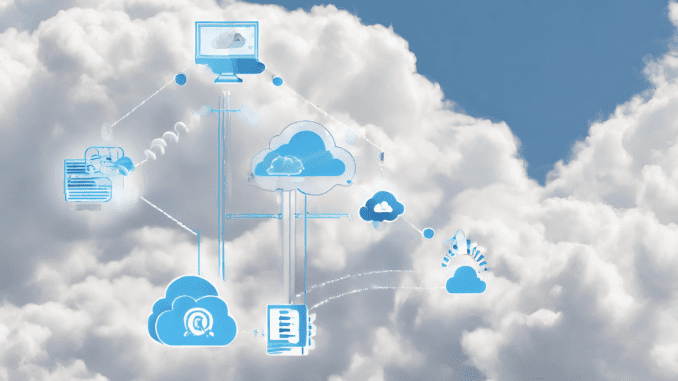
In the digital age, the significance of cloud computing has surged, becoming pivotal for businesses and individuals alike. However, with this reliance comes the paramount importance of securing cloud environments. This article delves into key strategies to fortify cloud computing security, ensuring the protection of sensitive data and systems.
Robust Authentication Measures
Implementing strong authentication mechanisms is crucial. Two-factor authentication (2FA) or multi-factor authentication (MFA) adds an extra layer of security, making unauthorized access considerably more challenging.
End-to-End Data Encryption
Encrypting data, both at rest and in transit, shields it from prying eyes. Employing advanced encryption standards ensures that, even in the event of data interception, the information remains unreadable and secure.
Regular Security Audits and Compliance Checks
Conducting periodic security assessments identifies vulnerabilities and ensures adherence to regulatory standards. This proactive approach aids in fortifying the cloud infrastructure against potential threats.
Advanced Threat Detection Systems
Utilizing cutting-edge threat detection technologies enables the early identification of suspicious activities. Real-time monitoring and immediate response mechanisms are essential in mitigating risks effectively.
Comprehensive Access Control Policies
Strictly regulating who can access what data in the cloud is fundamental. Implementing least privilege access ensures that individuals have only the permissions necessary to perform their tasks, reducing the risk of data breaches.
Employee Training and Awareness Programs
Educating staff about security best practices and potential threats is a vital component of a robust security strategy. Awareness can significantly reduce the chances of accidental or deliberate internal threats.
Incident Response Planning
Having a well-defined incident response plan ensures that, in the event of a security breach, actions are taken swiftly to minimize damage and recover any compromised data.
Cloud Security Best Practices
Adhering to established cloud security best practices and standards, such as those outlined by the Cloud Security Alliance (CSA), provides a solid foundation for protecting cloud environments.
Vendor Management and Evaluation
Thoroughly assessing and managing third-party vendors is critical. Ensuring that cloud service providers comply with high-security standards protects against vulnerabilities that could be exploited through their systems.
Secure Software Development Lifecycle (SDLC)
Integrating security into the software development lifecycle is non-negotiable. By adopting a Secure SDLC approach, developers embed security measures from the initial stages of application design and development, ensuring that the applications are fortified against vulnerabilities from the ground up.
Infrastructure as Code (IaC) Security
With the adoption of IaC, automating and managing the cloud infrastructure becomes seamless. However, ensuring that the code defining infrastructure adheres to security best practices is crucial. Scanning IaC for misconfigurations and vulnerabilities prevents potential security gaps before deployment.
Zero Trust Architecture
Embracing a Zero Trust model, which assumes that threats could be internal or external and verifies every access request regardless of location, significantly enhances cloud security. This approach minimizes the attack surface by ensuring that access is not granted based solely on network presence.
Cloud Native Security Tools
Utilizing cloud-native security solutions, designed to work seamlessly with cloud environments, provides more cohesive protection. These tools offer features like container security, microservices protection, and automatic scaling to align with cloud dynamics.
Disaster Recovery and Data Backup
Implementing a robust disaster recovery plan, including regular data backups, is essential. In the face of cyber attacks or system failures, the ability to quickly restore data minimizes downtime and financial losses.
Enhanced Network Security
Securing the network layer with firewalls, intrusion detection/prevention systems (IDS/IPS), and virtual private networks (VPN) is critical. These measures help to safeguard data in transit, ensuring secure communication channels within the cloud environment.
Security Information and Event Management (SIEM)
Adopting SIEM systems for real-time analysis of security alerts generated by applications and network hardware enhances threat detection. SIEM tools aggregate and analyze log data, helping to identify anomalous behavior and potential security incidents swiftly.
As we continue to navigate the complexities of cloud computing security, the focus shifts towards a more holistic and integrated approach to safeguarding digital assets in the cloud. This section highlights additional strategies and considerations that organizations should adopt to reinforce their cloud security posture further.
Read From Bits to Qubits: Understanding Cybersecurity and Quantum Computing
Continuous Monitoring and Analytics
Continuous monitoring of cloud environments ensures that security teams have real-time visibility into all activities and configurations. By leveraging advanced analytics, organizations can detect unusual patterns that may indicate a security threat, enabling rapid response to mitigate potential risks.
Public and Private Key Management
Effective key management is crucial for securing encrypted data. Organizations must implement robust procedures for managing public and private keys, including key creation, distribution, rotation, and revocation, to prevent unauthorized access to sensitive information.
Cloud Service Configuration Management
Misconfigured cloud services are a common source of security vulnerabilities. Regularly reviewing and managing cloud configurations to ensure they comply with security policies helps prevent data leaks and breaches. Tools that automate configuration management can significantly reduce the risk of human error.
Secure APIs
Application Programming Interfaces (APIs) are essential for integrating services and data in cloud computing. Ensuring that APIs are secure, including implementing proper authentication, encryption, and access controls, is vital for protecting against data breaches and other security threats.
Vendor Risk Assessment
Given the reliance on third-party vendors in cloud computing, conducting thorough risk assessments of these vendors becomes imperative. Evaluating their security policies, practices, and compliance with industry standards can help identify potential risks and ensure they meet your organization’s security requirements.
Security Culture and Policy Enforcement
Cultivating a culture of security within the organization is foundational. Regular training, awareness programs, and clear security policies encourage responsible behavior and ensure that everyone understands their role in maintaining cloud security. Enforcing these policies through automated tools can help maintain compliance and reduce risks.
Incident Response and Forensics
Despite the best security measures, incidents can still occur. Having a comprehensive incident response plan that includes forensic analysis capabilities allows organizations to quickly investigate and recover from security incidents, minimizing damage and preventing future breaches.
Emerging Technologies and Future Trends
Staying abreast of emerging technologies and trends in cloud computing and cybersecurity is essential for future-proofing your security strategy. Innovations such as quantum computing, machine learning, and blockchain have the potential to both introduce new threats and enhance security measures. Proactively exploring these technologies can provide a competitive edge and strengthen your security posture.
Conclusion
In conclusion, securing cloud computing environments demands a comprehensive approach, integrating advanced technology, stringent policies, and ongoing vigilance. By implementing these essential strategies, organizations can significantly enhance their cloud computing security, safeguarding their valuable data and systems against an ever-evolving threat landscape. Transitioning into a more secure cloud computing era not only requires technical solutions but also a shift in mindset, emphasizing the importance of security in every aspect of digital interaction.
Achieving robust cloud computing security is an ongoing process that requires attention to emerging threats and adapting to new technologies. Organizations must remain vigilant, continuously improving their security posture to protect their cloud assets. By embracing these advanced strategies and tools, businesses can ensure the integrity, confidentiality, and availability of their data in the cloud, staying one step ahead in the cybersecurity landscape. In doing so, they not only protect their own interests but also those of their customers, fostering trust and confidence in an increasingly digital world.
You can reach out to me if you have any questions.



Be the first to comment